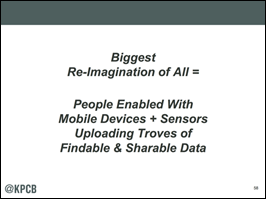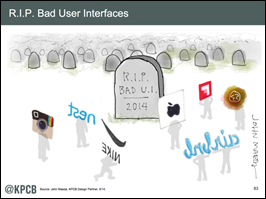Health IT from the CIO’s Chair 12/8/15
The views and opinions expressed in this article are mine personally and are not necessarily representative of current or former employers.
My 2016 HISsies Nominations Recommendations
I live in Los Angeles. Folks around here think the big awards are the Oscars, Golden Globes, Emmys, or Grammys. But in HIT, the nomination ballots have been released for the coveted HISsies, so I thought I would fill mine out publicly. Here it goes.
Smartest vendor action taken
CVS and Walgreens, for partnering with Epic to obtain a leading EMR for their retail clinics and enabling them the ability to partner with a large array of leading health systems.
Stupidest vendor action taken
IBM’s acquisition of Phytel. I think IBM is a great company that is undervalued in the market. They have a history of acquiring some great organizations. Among the best they have picked up in healthcare is probably Initiate. But in a yet-to-be-established population health IT market, any company is destined to get lost in the portfolio of a giant like IBM.
Best healthcare IT vendor or consulting firm
I’m admittedly biased. Epic. The scope and scale of what they have accomplished continues to be amazing.
Worst healthcare IT vendor or consulting firm
I’ll interpret worst as most underachieving. I’ll award this to GE and Philips for their lack of ability to leverage their market share in medical devices into something meaningful in the health IT space.
Best leader of healthcare IT vendor or consulting firm
One word : Judy.
Best provider use of healthcare IT (hospital, practice, etc.)
I admire the hard-working folks from my organization, so I’ll name Cedars-Sinai. But I’ll call out a few others Kaiser, Ochsner, Mercy, and Memorial Hermann.
Most promising new technology (in general – not a specific vendor product)
I’ll name three: the field of non-invasive diagnostics, biosensors (not wearables for well people, but technology that can monitor the chronic and acute), and actionable clinical decision support that can leverage the historic investments we have made in EMRs and data warehouses.
Most overrated technology
EMRs. Don’t get me wrong — they are essential and are the foundational agile technology base on which most of our health technology aspirations will ride. But the potential of the EMR alone has been overrated and over demonized.
Most overused buzzword
Pilot. A software pilot is supposed to be feasibility study, but instead has become a phrase to represent the first phase of a project that has already been decided and is seeking to start slowly in hopes of gaining engagement.
Most influential person in healthcare IT, i.e. “When ______ talks, people listen.”
As the late Tip O’Neill said, “All politics are local.” The most influential person in health IT is the CEO, so get him or her on board with any important initiative.
Most effective healthcare IT executive in a provider organization
I’m privileged to get to work with some great peers from all over the country, so I’ll name a few to offer some choices. Stephanie Reel, CIO at Johns Hopkins, is widely regarded among the best around and for good reason. Her list of accomplishments is long and admired by many (myself included). Scott Joslyn, CIO at Memorial Care in Orange County, CA installed Epic before it was the obvious choice and helped pioneer much of what we all take for granted today. It is worth noting he also led his system to be the first in the country to go live with Care Everywhere. It was available to all customers at the time, but he had the vision to see the benefits that now seem obvious to the rest of us. Daniel Barchi, new CIO at New York Presbyterian, knows how to get things done. He has accomplished great things at not one complex system, but two large systems, Carilion and Yale. it is clear NYP is now destined for great things ahead under his leadership.
Most effective clinical informatics professional in a provider organization
I’ll again name three. All are triple threats — they are effective clinical informatics professionals, effective healthcare IT executives (CIOs), and super smart. Pravene Nath, MD, CIO at Stanford; Mike Pfeffer, MD, CIO at UCLA; and Jeff Ferranti, MD, CIO at Duke.
Industry figure you’d most like to see on stage at HIStalkapalooza
Jonathan Bush, to hear what he might say. I love the irony that he is playing the Donald Trump role in the EMR debates.
Industry figure with whom you’d most like to have a few beers
Carl Dvorak.
Industry figure in whose face you’d most like to throw a pie
I’m with Judy – I don’t like to waste good pie.
HIStalk Healthcare IT Lifetime Achievement Award (recognizing a life-long body of industry work.)
Ivo Nelson. If you need an expert in healthcare, a mentor, a connector, or just some great advice, Ivo is your guy.
HIStalk Healthcare IT Industry Figure of the year
I’ll go with a controversial pick: Elizabeth Holmes.
Make your nominations here and subscribe to the HIStalk email for your chance to vote.

Darren Dworkin is chief information officer at Cedars-Sinai Health System in Los Angeles, CA. You can reach Darren on LinkedIn or follow him on Twitter.





















It doesn't look like much more than a computer facing a wall!!